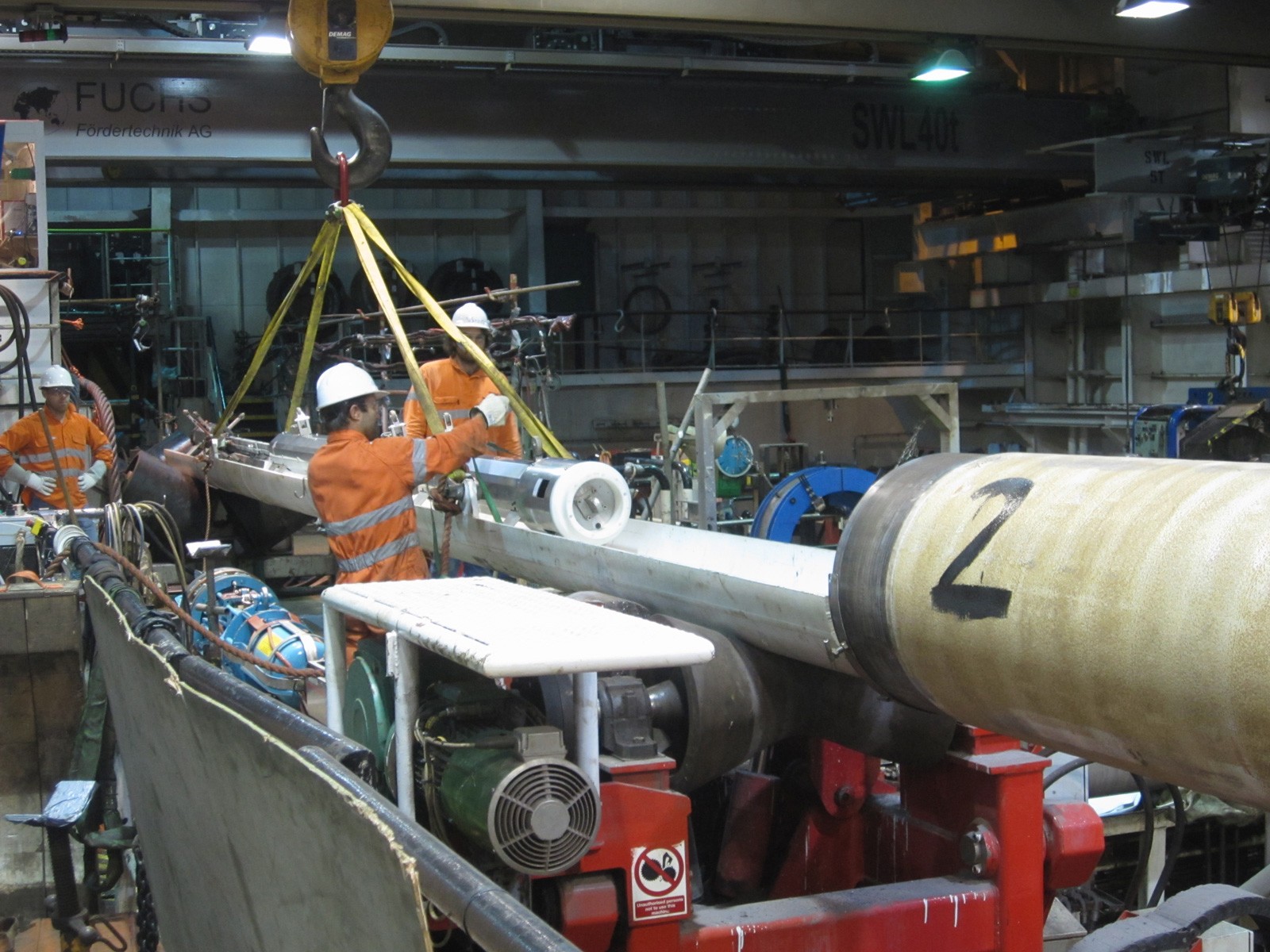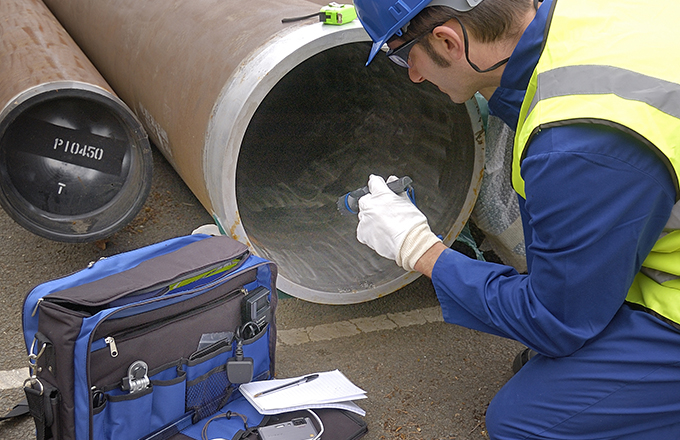Advanced Methods in Pipeline Welding Examination: Developments and Technologies for Improved Precision and Reliability in Weld Analysis
The landscape of pipe welding examination is undertaking a substantial makeover, driven by innovative strategies that guarantee to improve both accuracy and dependability in weld evaluations. Developments such as automated inspection systems and advanced imaging modern technologies are redefining traditional techniques, while non-destructive screening approaches make certain product honesty is kept.

Significance of Weld Evaluation
Guaranteeing the integrity of pipe welds is critical to the general safety and reliability of industrial systems. Welds serve as the structural foundation of pipes, which move a variety of liquids under varying stress. Problems in welding can cause catastrophic failures, leading to not only significant financial losses yet additionally potential environmental catastrophes and hazards to public safety and security. For that reason, rigorous evaluation of welds is important to the lifecycle of pipe facilities.
The significance of weld evaluation prolongs beyond mere conformity with regulative requirements. It acts as a proactive measure to recognize and fix blemishes, such as insufficient combination, porosity, or cracks, before they rise right into severe issues. Effective inspection strategies additionally add to the durability of pipes, lowering upkeep expenses and enhancing operational effectiveness.
Additionally, detailed weld evaluations foster count on amongst stakeholders, including regulatory bodies, financiers, and the communities served by these pipelines. By making certain that all welds satisfy the required requirements, organizations can minimize risks and copyright their track records. In summary, weld examination is important not just for operational honesty but likewise for the more comprehensive ramifications it holds for safety and ecological stewardship.
Automated Evaluation Equipments
The combination of computerized assessment systems in pipeline welding has actually changed the technique to guaranteeing weld high quality and stability. These systems utilize sophisticated robotics and man-made intelligence to perform inspections that are not just faster however additionally a lot more consistent than traditional approaches. Automated systems can cover substantial sizes of pipelines effectively, recording information that human inspectors could ignore due to tiredness or environmental conditions.
Among the crucial benefits of computerized assessment systems is their capacity to operate in hazardous atmospheres, lowering the danger to human inspectors. They utilize different non-destructive testing (NDT) methods, such as ultrasonic testing and magnetic particle evaluation, to examine weld honesty without endangering the framework. The information accumulated is refined in real-time, permitting prompt responses and punctual rehabilitative actions when issues are recognized.
In addition, automated systems facilitate the standardization of examination procedures, ensuring that each weld is examined against consistent criteria. This not only improves the integrity of outcomes however likewise enhances compliance with regulatory standards. As sectors proceed to focus on security and functional performance, the duty of automatic examination systems in pipe welding will most certainly increase, leading the way for a lot more advanced quality assurance methods.
Advanced Imaging Technologies
Often utilized in modern pipe welding evaluations, advanced imaging modern technologies have substantially enhanced the capacity to find and evaluate weld problems. Strategies such as digital radiography, computed tomography, and thermographic imaging supply inspectors with high-resolution photos that reveal sub-surface problems and structural incongruities that may be invisible to the nude eye.
Digital radiography makes use of electronic sensing units to capture photos, enabling for prompt evaluation and boosted picture comparison. This brings about quicker inspections and enhanced precision in recognizing vital issues. Computed tomography, on the other hand, supplies three-dimensional imaging, allowing assessors to visualize complicated geometries and assess the stability of welds from multiple angles - Pipeline Welding Inspection. This depth of evaluation their website is indispensable for detecting problems that conventional techniques might overlook.
Thermographic imaging uses infrared technology to find variants in temperature, my explanation identifying locations of potential weakness or tension within the weld. These sophisticated imaging innovations not just boost issue discovery prices but also reduce the time and resources required for pipe evaluations. Because of this, they play a critical duty in keeping pipe safety and reliability, making sure conformity with industry requirements while minimizing functional threats.
Non-Destructive Testing Techniques
Using numerous techniques, non-destructive screening (NDT) approaches are essential in pipe welding assessments, permitting the assessment of weld integrity without endangering the material's structural stability. NDT encompasses a variety of techniques, consisting of ultrasonic testing (UT), radiographic testing (RT), magnetic fragment testing (MT), and color penetrant testing (PT) Each method has distinctive advantages and applications depending on the certain demands of the evaluation.
Ultrasonic screening uses high-frequency sound waves to spot internal problems, offering exact dimensions of weld thickness and honesty. Pipeline Welding Inspection. Radiographic testing uses X-rays or gamma rays to create photos of the weld, exposing inner problems that might not show up on the surface. Magnetic particle screening is effective for discovering surface and near-surface discontinuities in ferromagnetic products, while dye penetrant testing highlights surface area splits by making use of a tinted dye
Including these NDT techniques right into pipeline welding examinations improves the precision and reliability of weld analyses, guaranteeing that prospective failings are identified early. As markets require higher requirements pop over to these guys for safety and performance, the duty of NDT in maintaining the integrity of bonded structures continues to be critical in pipeline building and upkeep.

Future Fads in Weld Analysis
As we seek to the future of weld assessment, advancements in technology are positioned to transform the methods utilized for examining pipeline honesty. The combination of expert system (AI) and artificial intelligence in examination processes is anticipated to improve the precision of problem discovery and predictive upkeep. These innovations permit for real-time data evaluation, allowing inspectors to recognize potential problems prior to they escalate into significant issues.
Furthermore, using drones outfitted with advanced imaging systems is getting traction. These aerial inspections can cover huge locations rapidly, recording high-resolution pictures and information that can be evaluated for issues in hard-to-reach places. This not just enhances safety yet additionally increases effectiveness in the examination process.
Moreover, the development of clever sensors installed in pipeline systems supplies the possibility for continual monitoring. These sensors can discover modifications in stress, temperature level, and resonances, supplying beneficial understandings into the health of the welds in time.

Verdict
Finally, the integration of sophisticated strategies in pipe welding examination substantially boosts the precision and dependability of weld evaluations. Developments such as automated inspection systems, advanced imaging modern technologies, and non-destructive screening techniques play a critical duty in enhancing flaw discovery rates and fostering proactive upkeep methods. As these innovations continue to evolve, they will certainly additionally guarantee the safety and performance of pipe systems, ultimately contributing to the integrity of critical framework.
